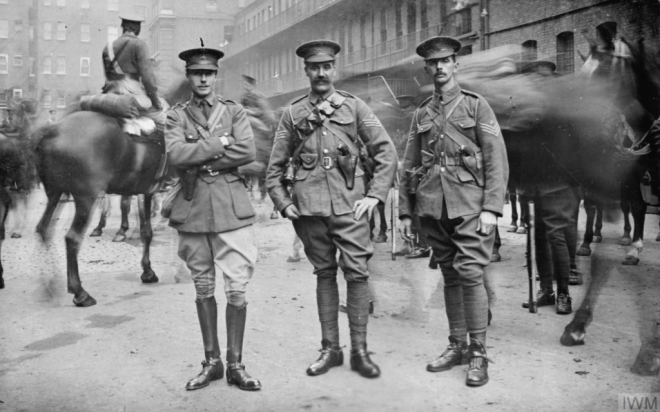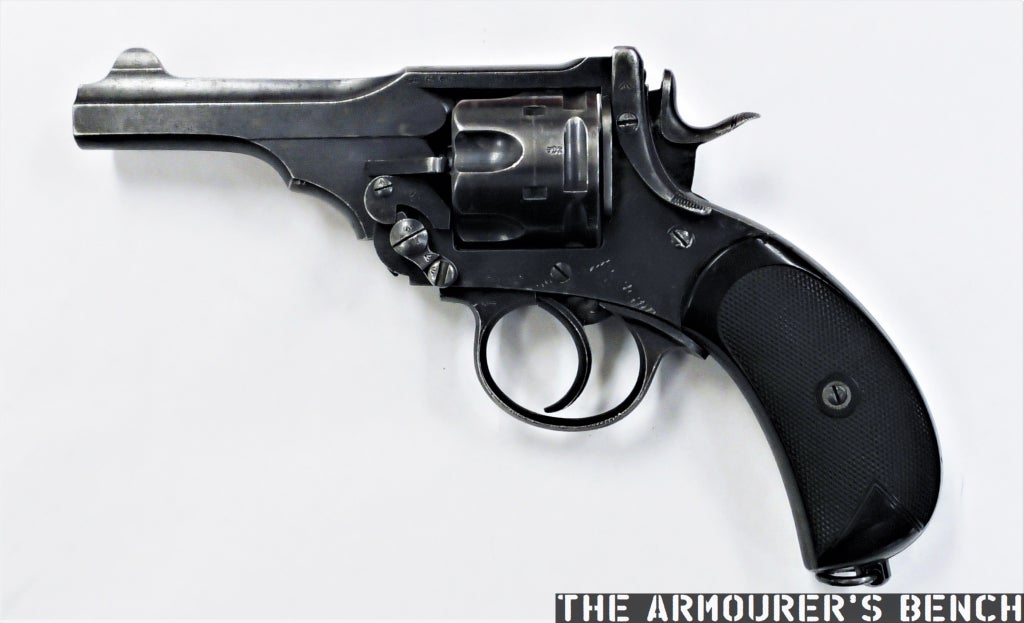There are few firearms more quintessentially British than the Webley revolver and a Lee-Enfield rifle. Today, we’re going to take a look at the Webley MkIV, adopted by the British Army right at the very end of the 19th Century.
Entering service in October 1899 the majority that entered service were purchased in a five year period running from 1899 to 1904. Chambered in the classic .455 Webley cartridge, the MkIV is not to be confused with the later .38 calibre Webley MkIV.
Until the early 1880s revolvers had been the traditional preserve of officers. Officers were responsible for providing their own privately purchased sidearm, a tradition that continued into the first year of World War One. In 1878, however, the British Army began issuing revolvers to specialist troops such as gunners, NCOs and trumpeters. By the late 1890s, a new revolver was needed for these enlisted troops and the MkIV was Webley’s answer.
The new Webley first saw action in South Africa during the Second Anglo-Boer War, as such, it became known as the ‘Boer War Model’. Despite this lasting association, it saw action in a number of colonial campaigns in Asia and Africa (including the Anglo-Aro War, Somaliland Campaigns, the British expedition to Tibet, and the Bambatha Rebellion) as well as during the World War One.
A little while back I made a short video about the MkIV, check it out below:
Externally, at a glance, the Mark IV looks little different to its predecessors retaining the same short 4-inch barrel, the same general layout and the same style birdshead grip of the earlier Mk II and MkIII revolvers. The MkIV, however, embodied a number of important improvements. Webley made the barrel, body, cylinder and the cylinder axis from a special mild steel while the ratchet teeth of the extractor and lifting point of the pawl were case hardened to make them more durable. The width of the slots in the cylinder was increased (from ·0625″ to ·125″) and the hammer was lightened. Like its predecessors, Webley MkIV had a hinged frame, top break action with a 6-shot cylinder and an automatic ejector which extracted and ejected cartridge cases when the frame was opened.
The MkIV has the classic Webley double action/single action trigger and also used a new cylinder retention method, introduced with the MkIII in just two years earlier. Patented by William Whiting, Webley’s chief engineer, the new cylinder retention system allowed for very smoother rotation. Previously the cylinder axis pin had been retained by a cross screw. In the new system, a small hook engages a lip on the front of the cylinder, when the action was opened and held it in the frame.
Revolvers purchased by the War Office for general issue are often covered in War Office Arrow Head markings on many of the revolver’s major components, this indicates the pistol was purchased by the Government and not privately purchased by officers. 36,756 MkIV’s entered service with many seeing hard use during World War One. They were eventually superseded by the MkV and the MkVI, over 100,000 of which were produced.
 Your Privacy Choices
Your Privacy Choices


